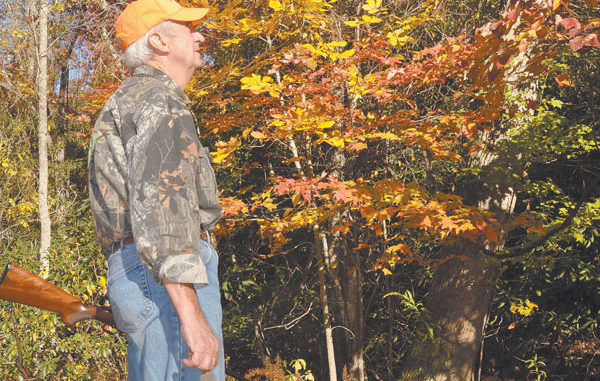
Pisgah National Forest is North Carolina’s headquarters for squirrel hunting
Bob Glenn eased slowly along a rock-strewn path that once served as the bed for a narrow-gauge railroad. Timber was the primary resource in the highest elevations of North Carolina’s Appalachian mountains during the early 20th century, and the railroad grades and logging roads crisscrossing the rugged terrain that were used for transporting felled trees are a legacy of that period in time.
Glenn was taking advantage of that legacy, also relying on the forest’s growth to provide another of the region’s hallmark resources. Stepping carefully, lest his footfalls dislodge a noisy rockslide that could alert his quarry, he was hunting red and gray squirrels with a .22-caliber rifle. A retired machinist, Glenn, 77, said squirrel hunting has been one of his favorite activities since childhood.
“I grew up in Black Mountain, and I’ve lived there all my life,” Glenn said. “I move a little slower now than when I was young because I’ve had two knees and a hip joint replaced.
“I hunt deer, bear, turkeys and grouse, but squirrel hunting is probably the most dependable if you want to take something home to eat,” he said. “I usually hunt gray squirrels, because they are bigger, but on a good day, red squirrels are everywhere, like flies, and I love to eat young, fried squirrels.”
Glenn is a long-standing member of the Mount Mitchell Bear Club, and its land, where he was hunting, is as typical of the mountainous terrain of the area, including the nearby and sprawling Pisgah National Forest.
“Gray squirrels eat acorns and hickory nuts, so you find them in the lighter hardwood timber,” he said. “You find more boomers (reds) in the dark timber because they eat hemlock seeds. Gray squirrels are bigger than red squirrels, so I would rather hunt them, but I will shoot a boomer if he gives me a good shot and I haven’t shot enough gray squirrels.”
Some seasons are better than others for gray squirrels, with success depending upon the year’s hard mast crop, according to Glenn, who said that some seasons, a bumper crop of nuts will bring squirrels into an area in huge numbers.
“I’ve seen Interstate 40 covered with hundreds of dead squirrels that tried to get across,” he said. “Some years, the number of squirrels outstrips the food supply, and they migrate long distances to try to find enough to eat.”
When he is hunting gray squirrels, Glenn said he walks into the woods by the quietest route, which is typically a former or active vehicle trail or foot-worn hiking path. He moves as quietly as possible, searching for gnawed acorn and hickory nutshells and hemlock seeds piled on stumps, rocks, the trunks of fallen trees or on the ground. Usually, he gets a few opportunities before he reaches his final destination. Once he finds a good spot to sit that has an open view and lots of squirrel sign, he sits down on a stump or rock and waits.
“The walking is quietest in the morning or after a rain,” he said. “On sunny days, I hunt early in the morning or late in the afternoon when the squirrels are most active. On cloudy days, I usually hunt all day long because the squirrels stay active.
“Another great time for hunting squirrels is right before a storm, because they move around to feed so they won’t have to come out of their dens when the bad weather hits.”
Unlike most squirrel hunters, Glenn doesn’t have a scope on his .22 rifle. His eyes are still good enough to align the iron sights on a squirrel’s head. He uses long-rifle, hollow-point ammo to anchor squirrels instantly. In the mountain terrain where he hunts, a squirrel that remains mobile for only a second or two after being struck by a bullet has time to run into a chipmunk burrow, a hole in the ground or a crevasse in the rocks where it can’t be recovered.
At times, he also uses a 12-gauge shotgun loaded with No. 6 shot. When he is more in a walking mood than a sitting mood, a shotgun offers a better option for shooting squirrels on the run. He also takes along his shotgun when he thinks there might be an opportunity to shoot a grouse while walking along a trail.
“The best time to shoot grouse and squirrels on the same hunt is early in the season before the grouse get so spooky that they flush out of range,” he said. “Once they hear gunfire along the easier walking trails, it’s much harder to shoot either a grouse or a squirrel. Those that survive the first few weeks quickly become educated about hunters.”
Glenn hunts portions of Pisgah National Forest in McDowell County and Yancey County, including the Curtis Creek area, which has a road along the creek with gated walking trails branching off the main road. The South Toe River area near Mount Mitchell is another great place to hunt both squirrel species.
Danny Ray is a wildlife biologist for the N.C. Wildlife Resources Commission whose territory includes Glenn’s hunting grounds. He said red squirrels are typically found at higher elevations, while gray squirrels can be found at any elevation. Like most hunters, he prefers taking gray squirrels because they are larger, but he said red squirrels are unique game animals because of their habitat requirements.
“Red squirrels usually occur at elevations as low as 2,800 feet and at the highest elevations in the state, which are above 5,000 feet,” Ray said. “But 3,500 to 4,500 feet offers the best habitat, with a good mix of oak, beech and hemlock trees.”
Ray said the best places for red squirrels are the hemlock, white pine and spruce forests on north slopes. Conversely, the best places to hunt gray squirrels occur in the hardwood forests on the south slopes.
“The difference in habitat is due to totally different climates,” he said. “The north slopes have deeper, moister soils, while the south slopes have thinner, drier soils. The edges of the evergreen forests on the north slopes are the most likely places to find red squirrels. When you get into an area with lots of red squirrels, you’re going to hear them barking. They are very vocal, and that gives away their location.”
Red squirrels do more hiding of seeds, acorns and nuts in rocks and holes, Ray said. They are also very territorial and protect their winter larders from other squirrels — one reason they are so vocal. Gray squirrels are also quite vocal during territorial disputes, but they are more prone to bury nuts randomly and dig them up later, giving away the locations of good hunting areas to observant hunters who see the disturbed leaves on the forest floor.
“The best way to hunt squirrels is by slipping through the forest on the logging roads,” Ray said. “Some of the old roads are still there, dating back to the early 1900s. Many of them were also active through the 50s, 60s and 70s. Once the leaves fall off above 4,000 feet in October, most of the hikers have disappeared. Since I still might see a hiker occasionally, I use the main trails to get to a good area, drop down onto a ridge to hunt it out, then go back to the main trail and walk to another ridge.”
Ray said there are plenty of squirrels, with some of the best access roads that have side trails offering good hunting in McDowell County along the Curtis Creek Road (FR 482) and FR 1188, which is a gated road that intersects FR 482. Curtis Creek Campground is located on FR 482. The north end of FR 482 intersects NC 2 in Yancey County, and Ray called the road on the opposite side of the intersection the Refuge Road (FR 2074). FR 2074 intersects the Toe River Road (FR 472), which runs approximately north and south along the river and offers access to some excellent side trails. Black Mountain and Briar Bottom campgrounds are located near the intersection. He said the Buncombe Horse Range Trail also has excellent squirrel hunting.
“I like hunting squirrels because it’s so relaxing,” Ray said. “The best time to hunt squirrels is a bluebird day, when the weather is warm and the sun is shining. Squirrels aren’t as active during rainy or drizzly days. Windy days are the worst days for hunting squirrels. The cold doesn’t seem to bother squirrels like the wind does, especially the red squirrels. You see red squirrels out moving around on very cold days, even when there is snow on the ground.”

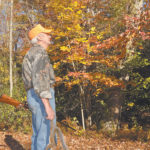
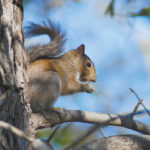
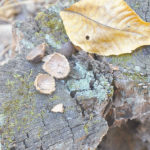
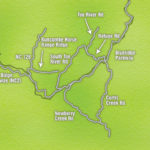
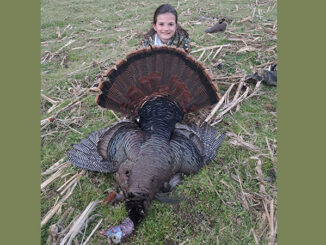

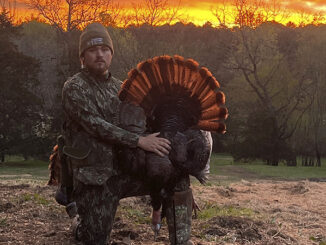

Be the first to comment